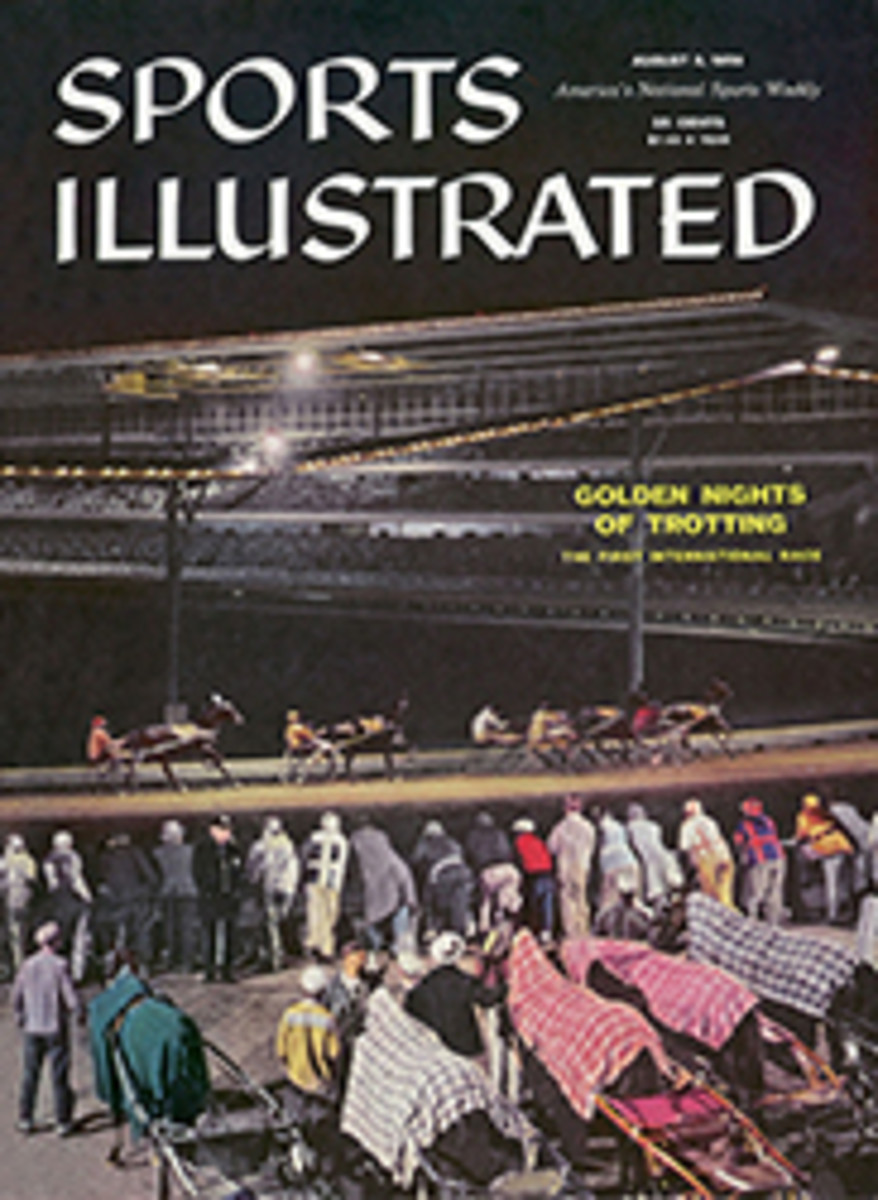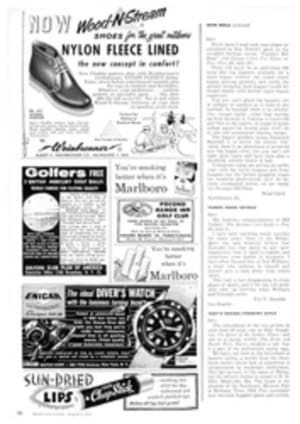
A Westerner Looks at the Beaverkill
One comes to it as a pilgrim to a shrine, a sacred, shining place, made so by the deeds of the great and passing feet of many generations. And it is just that.
There is sense and no sense in picking Opening Day for the pilgrimage. The noble hills are brown except for scattered conifers; the hardwood trees are brown and leafless and last year's leaf fall is brown under them where it is not whitened by the passing snow flurries. The air is cold, the water is colder still and the trout lie quiet in the deep pools, when they are not down in the still deeper pools of the East Branch. It is an unlikely time for good trout fishing.
Yet it is the gathering time for pilgrims old and new, and the time of all times for a new pilgrim to learn the devotion that the little river inspires and to sense its traditions. For the Beaverkill, with Neversink, Battenkill, Willowemoc and a few others, is surely the nursing water of American fly-fishing.
On Friday night, with the frost tight in the ground outside, the bar at Doug Bury's Antrim Lodge was crowded with fishermen greeting each other for the first time in six months or a year. It was too cold, they agreed, too early, and there were far too many people around. "Fishing tomorrow, Jim?" "Naw. Just go out and look it over." "Fishing tomorrow, Frank?" "Drive up and down a bit, maybe, talk to a few guys. Might put up a rod." Never have so many fishermen driven so far to protest their intention of not fishing. Yet I knew just how they felt. Tomorrow was Opening Day. There would be few lines that did not touch river water, however briefly, and those would mostly be spares.
Bill Naden of the Brooklyn Fly Fishers Club arrived in good time next morning, and he and Ed Zern showed me the river—downstream first, from the Junction Pool at the mouth of the Willowemoc clear to the East Branch of the Delaware. Many miles of beautiful water on a big, bold stream, nearly all of it readily accessible from the road. On Opening Day, little more than a hundred miles from Manhattan, I had supposed it would be crowded with fishermen. True, they crowded a few favored spots, lined both banks five or 10 feet apart at the Junction Pool and at a slab rock pool by a bridge; but there were miles of water where a man would have found no more competition than on any British Columbia stream within easy reach of a paved road. And fly-fishermen, may the Lord sharpen their hooks and guide their wrists, seemed as numerous as spinners.
SHADES OF THE PAST
We drove back, stopping now and then to watch and talk and uncork a bottle, and came to the upper stream above the Willowemoc junction. The shades and living spirits of the great were now with us, their names on our lips: Hewitt with 14-foot leaders, La Branche with nine-foot or less—"That's why he doesn't catch any fish," said the shade of Hewitt, careless of fact. Sparse Grey Hackle, who will take many more fish from the river on 18 and 20 flies; gentle Jack Atherton who, unhappily, will not. And Theodore Gordon: "For at least a hundred years," he wrote over 50 years ago, "the Valley of the Beaverkill has been celebrated for its beauty and the river for its trout."
Gordon could well write the same words today if he were living. Clear and cold and lovely, the upper stream sparkles down in cascades and runs and trout-loved pools from its spring-fed source in Balsam Lake. We saw fishermen lined again close by Ogden Pleissner's covered bridge. We saw miles of posted water broken by shorter stretches of free water. I thought of Gordon again: "I fear that in a few years very little water will be free to the public...for real sport, give us free water, where the trout are critical, hard to please and highly valued when caught." Gordon believed that to take large fish when they were shy was the acme of sport.
FISHLESS BUT FAITHFUL
We wet our lines in the posted waters, working down the Brooklyn Club's Home Pool, through Twin Rocks and on to the lip of the dam, where we swung big streamers back and forth in the foaming overflow, while a brief blizzard hid even the nearest bank from sight. We turned back fishless to the big fire in the clubhouse, but tradition had been served and well served, and we were happy as men can be.
Western eyes and a western heart could not ask for more than this. It has all been going on for a very long time. The fathers of the sons and the grandfathers of the grandsons fished here on earlier opening days, grew up with the clubs or on the free water. Halford and Skues and Pulman, Walton and Cotton and Berners made spiritual pilgrimage across the ocean to the Beaverkill. Gordon, Hewitt, LaBranche, Atherton, the Darbees, the Dettes and many others caught the spirit, interpreted it anew, sent it out across the vast continent. Today it reaches the many millions who seek respite and reward in the fly streams from Atlantic to Pacific, from Mexico to the Arctic Ocean.
I would go again to the Beaverkill when the rhododendrons have opened their buds on the slope above the Home Pool, when the trees are in full leaf and the air hums with warmth and life and the river is low. I would hope for a hatch and a few great trout rising steadily here and there, "critical and hard to please." But if there were none, it could scarcely matter. The river would be there and its banks—and all about me the shades of great fly-fishers. They would know I searched faithfully, and in an honorable tradition.

